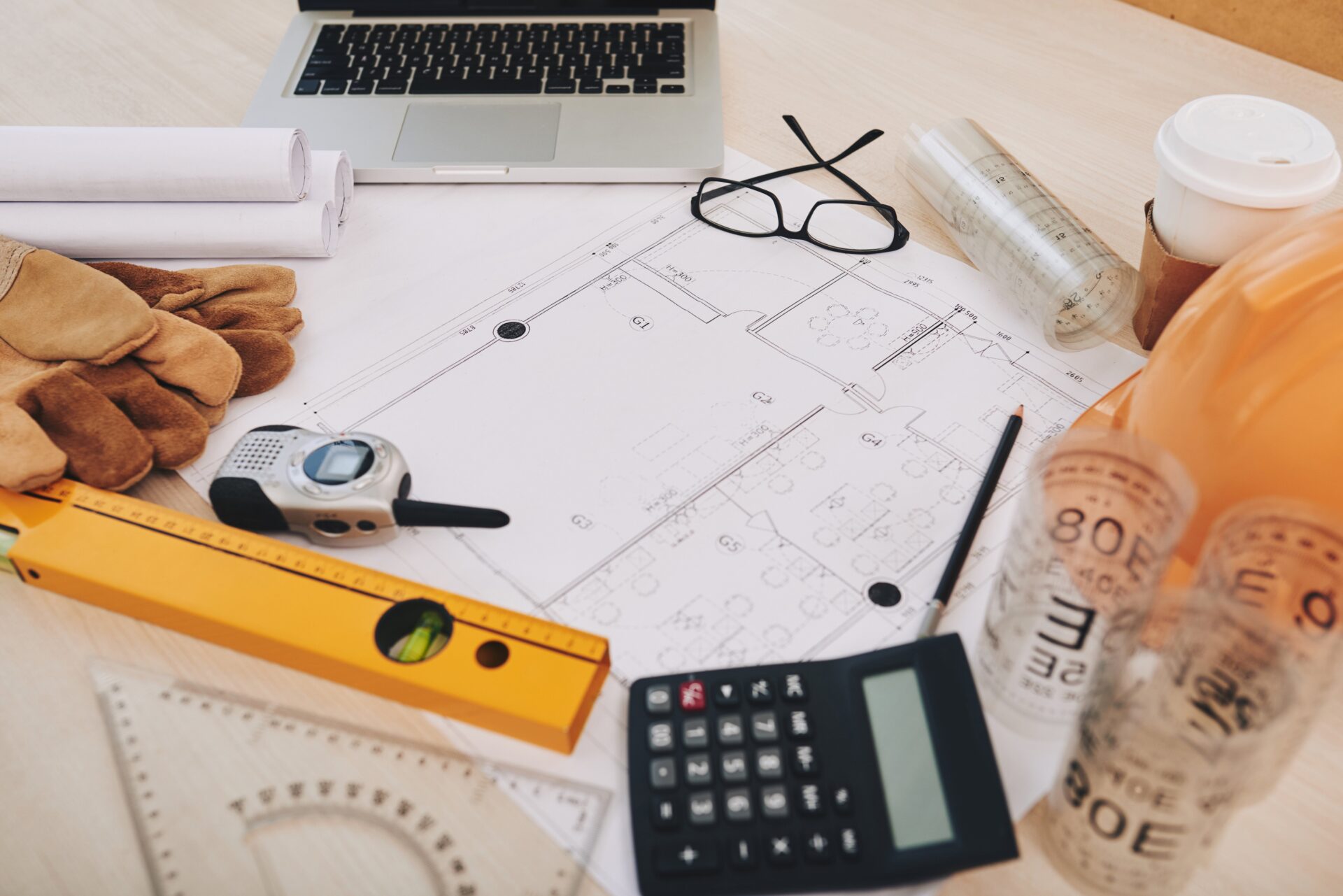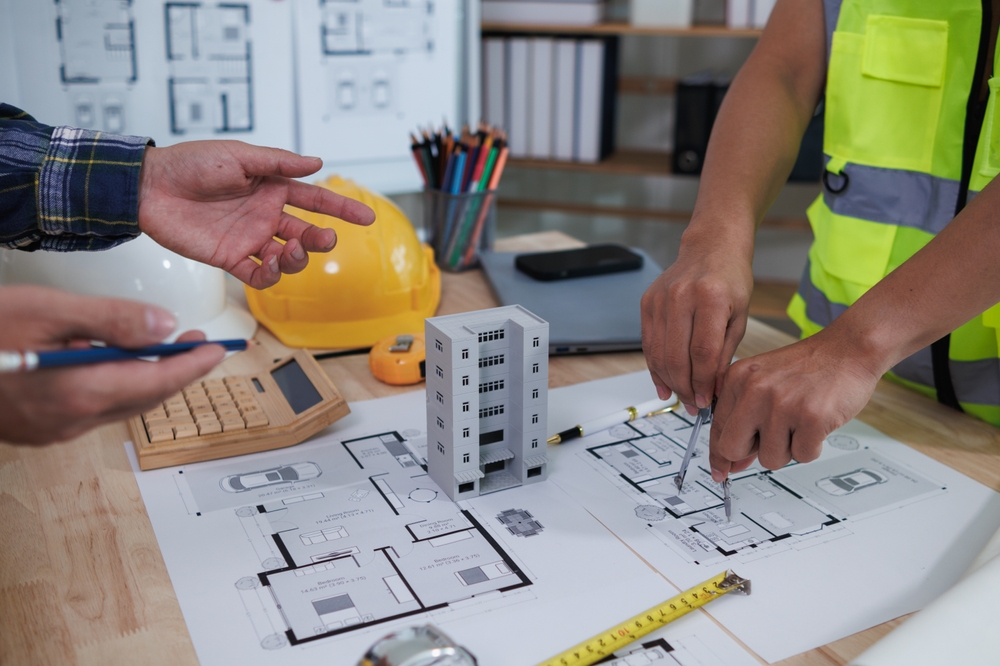Planning a roofing project can feel stressful, especially when it comes to budgeting. One of the most crucial steps is learning how to estimate roofing costs accurately. This process provides a clear understanding of the total price, including materials, labor, permits, and other associated expenses, before any work commences.
By estimating roofing costs early, you can avoid unexpected expenses and make more informed decisions. It also helps you compare contractors, select the right materials, and plan your project more efficiently. A precise estimate lays the foundation for a smooth roofing experience. With the right approach, you can save money, prevent problems, and ensure your roof lasts for years to come.
In this blog, we’ll guide you step by step on how to estimate roofing costs so you can plan your project with confidence.
What is Roofing Estimating Cost?
Roofing estimating cost is the process of determining the total cost of a roofing project before any work begins. It provides a clear understanding of total expenses, allowing you to plan your budget more effectively.
This process involves measuring your roof and calculating its slope. Next, you choose the roofing materials. You also include all additional costs, such as labor, permits, and waste removal.
The goal of roofing estimating cost is to provide a complete budget estimate. It helps homeowners plan finances, compare different contractor quotes, and avoid unexpected expenses during the project.
Key Factors Included in Roofing Estimates
Planning a roofing project, it’s essential to know the cost beforehand. A roofing estimate shows a detailed breakdown of expenses before any work starts. This helps homeowners avoid surprises and ensures contractors charge a fair price. Several factors affect the total cost of a roofing job.
1. Materials
A roofing estimate includes all the materials needed. This typically includes shingles, underlayment (the protective layer beneath the shingles), nails, flashing (metal pieces that prevent leaks), and vents. The type of material you choose affects the price. Asphalt shingles are the cheapest. Metal, tile, or slate roofs are much more expensive.
2. Labor Costs
Labor is another big part of the estimate. Roofers are paid for their time and skill. If your roof is steep or has a complex shape, it takes more work to install. This increases labor costs. Labor prices also vary by location. Some cities have higher roofing costs than others.
3. Permits and Inspections
Many roofing projects need permits and inspections. Some cities require approval before replacing a roof. These permits cost money and add to the total price. Usually, contractors handle this, but the cost is included in the estimate.
4. Overhead and Profit
Contractors also include overhead costs. This covers tools, trucks, office space, and insurance. Additionally, they add a profit margin. A reasonable estimate strikes a balance between these costs while remaining reasonable for the homeowner.
5. Roof Size and Pitch
The size of your roof matters. Larger roofs require more materials and labor, resulting in higher costs. Roof pitch, or the steepness of the roof, also affects the cost. Steeper roofs require more time to work on and may necessitate the use of special equipment.
6. Regional Differences
Roofing costs can vary by region. Labor rates, material availability, and local building codes all play a role.
How to Estimate Roofing Costs?
Estimating the cost of a new roof doesn’t have to be complicated. By following a few simple steps, you can gain a clear understanding of the potential cost of your roofing project.
1. Measure Your Roof
Start by measuring your home’s dimensions from the ground. Use a tape measure to measure from corner to corner and record the numbers. If your roof has overhangs, include them in your measurements. For example, if the overhangs are 6 inches, add 1 foot to each side of the overhang.
2. Calculate the Roof Slope
Next, find out the slope of your roof. You can use a pitch measuring tool or a simple square. Measure the rise over the run along your roof’s gable. Knowing the slope helps calculate the total roof area accurately.
3. Choose Roofing Material and Estimate Costs
Pick a roofing material that fits your budget and style. Then, multiply the cost per square foot by your roof’s total area. For instance, a wood shingle roof costing $6.89–$8.90 per square foot for a 2,000-square-foot roof would cost approximately $13,780–$17,800.
4. Add Labor and Extra Costs
Finally, include labor, permit fees, and any additional expenses. This will provide you with a comprehensive estimate of your roofing project.
Making the Right Choice: Repair vs. Replace Your Roof
When your roof has leaks or damage, the first question is whether to repair it or replace it entirely. Here’s how to decide:
- Repair: If your roof is fairly new and the damage is minor, a repair may be enough. Small maintenance can extend the roof’s life and prevent bigger problems.
- Replace: If your roof is over 20 years old or the damage is severe, replacing it might be the better choice. A complete replacement can save you from repeated issues in the near future.
- Consult an Expert: If you’re unsure, ask a professional roofer. They can inspect your roof and recommend whether a repair or replacement is best for your needs.
 Tips for Comparing Roofing Estimates
Tips for Comparing Roofing Estimates
Getting multiple roofing estimates is a smart way to find the best price. But not all estimates are the same. Some may appear cheaper at first, but they often leave out essential details. This can cost you more later. A reasonable roofing estimate clearly explains the work, materials, and timeline. If an estimate is unclear or lacks details, exercise caution.
Below is a simple table showing what should be included in a roofing estimate:
What to Check | Details | Why It Matters |
Scope of Work | Clear explanation of tasks: removing the old roof, installing new materials, and cleaning up | Ensures you know precisely what the contractor will do |
Materials List | Type, brand, and quality of shingles, underlayment, flashing, and vents | Avoids low-quality materials that can cause problems later |
Project Timeline | Start and completion dates, estimated duration | Helps you plan and know how long the job will take |
Warranty Information | Coverage for materials (manufacturer) and labor (contractor) | Protects you if something goes wrong after installation |
Payment Terms | When and how payments are due | Be careful with contractors asking for full payment up front |
Cleanup and Disposal | Removal of old roof materials and final cleanup | Keeps your property safe and tidy after the project |
Final Tips:
- Always compare total costs and what’s included.
- Make sure estimates cover materials, labor, permits, and disposal fees.
- Ask the contractor about any materials or costs you don’t understand.
FAQs
How To Calculate 1 Sq And 1 Bundle Of Roof?
A roofing square covers 100 square feet of roof area. Most shingles come in bundles, and it usually takes 3 bundles to cover 1 square. So, if your roof is 2,000 sq. ft., you will need 20 squares, or approximately 60 bundles of shingles.
What Is The 3 4 5 Method For Roofing?
The 3-4-5 method is a simple way to check roof angles using the Pythagorean theorem. Measure 3 feet along one side, 4 feet along the other, and adjust until the diagonal measures 5 feet. This ensures the corner forms a perfect right angle.
How Big Is A 30 Square Roof?
A 30-square roof means 30 roofing squares, or 3,000 square feet of roof area (since 1 square = 100 sq. ft.).
What Is The Cheapest Roofing Material?
The most affordable roofing material is typically asphalt shingles. They are affordable, easy to install, and widely available.
What Are The Three Types Of Roofing?
The three main types of roofing are asphalt shingles, metal, and tile or slate. Asphalt shingles are standard and affordable. Metal roofing is a durable and long-lasting material. Tile or slate roofing looks nice, but costs more than the other types.
Conclusion
Planning a roofing project can be easier when you know what to expect. Estimating the price of materials, labor, permits, and other expenses helps you avoid surprises and make smart choices. By learning how to estimate roofing costs, you can compare contractors, choose the right materials, and decide whether to repair or replace your roof.
It ensures your project runs smoothly, saves money, and gives your home a strong, long-lasting roof. For accurate and reliable roofing estimating services, contact Prime Estimation today. Our experts provide professional, detailed estimates, enabling you to plan your project with confidence.


 Tips for Comparing Roofing Estimates
Tips for Comparing Roofing Estimates









